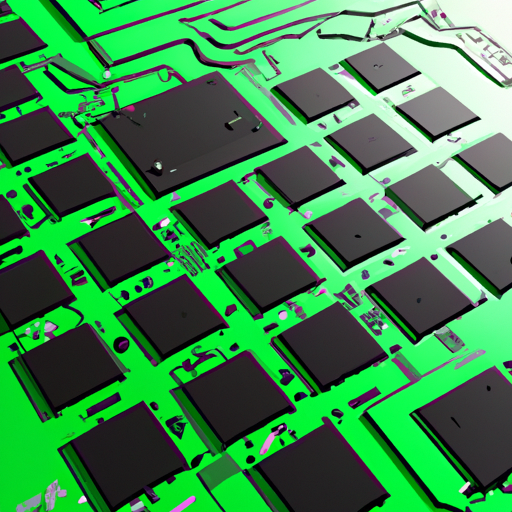Note: As an Amazon Associate we earn from qualifying purchases.
Upgrading from 48GB RAM to 64GB on Apple’s new Macbook M3 laptops: worth it?
Introduction
I’ve been contemplating whether to upgrade the RAM on my M3 MacBook Pro. I pondered if shelling out for extra gigabytes—a jump from 48GB to 64GB—was really necessary for my computing needs. The added cost of more RAM begged for justification against potential performance benefits.
Prices
Check prices of the M3 Macbook Pro on:
Evaluating the Cost-Benefit of Additional RAM in M3 MacBooks

When it comes to upgrading RAM on the M3 MacBook Pro, the decision isn’t black and white. I’ve been mulling over whether the jump from 48GB to 64GB is worth the extra cost and the potential benefits for performance. Here’s where I’ve landed:
- Immediate Performance Gains: More RAM means less reliance on swap memory, which translates to snappier multitasking and handling larger files with ease.
- Long-term Usability: Your MacBook is likely to remain capable as software demands increase over the years; more RAM can extend the life of the machine.
- Resale Value: Higher-spec machines tend to retain their value better over time.
However, macOS is remarkably efficient with memory management. With the Unified Memory Architecture (UMA), the system dynamically allocates memory where it’s needed, which differs significantly from traditional memory management. This means that for many users, 48GB is quite spacious.
Now, let’s talk about the downsides. First, the cost - no matter how you slice it, a few hundred dollars for an extra chunk of RAM is a serious investment. Also, consider the law of diminishing returns; beyond a certain point, extra RAM won’t yield noticeable performance improvements for most users. I’m not editing 8K HDR videos or handling massive data sets daily, so do I really need that much RAM?
For context, when running two VMs, editing 4K video, or working with hefty applications like Tableau, hitting the upper limits of 48GB is possible. Still, these are specific use cases, not the everyday tasks of an average user.
Important sources back the claim that, for heavy tasks, MacBooks with more RAM perform better, but they also highlight that macOS efficiency often makes the extra space underutilized for the average user (source: MacWorld).
In summary, my two cents on the matter - I lean towards optimism about the extra RAM. It’s a sort of comfort, knowing it’s there if needed. While one might not need to max out the RAM, for those who want a machine that’ll hold up solidly in the long term, for prosumers, or if resale value is a concern, extra RAM might just prove its worth. But for most Mac users, the base offering likely hits the sweet spot in balancing cost and performance.
Predicting Future Needs: Is Bigger Always Better for RAM

Predicting the future needs of computing hardware, particularly RAM, is a continually shifting paradigm. It’s well known that software demands and data are fundamentally inflating, but the question remains: how much is enough when it comes to a device’s memory? Here, I weigh the pros and cons of opting for higher RAM in the context of the new M3 MacBooks.
When evaluating the need for additional RAM, it’s crucial to consider your usage patterns and potential future requirements. For instance:
Pro: Heavier apps and more advanced features will likely consume more memory down the line.
Con: Higher RAM configurations drive up the initial cost and might be overkill for many users.
It’s evident that the memory management of macOS is inherently adept at resource allocation, utilizing whatever it has at its disposal efficiently. Upgrades like the one from 48GB to 64GB may offer marginal improvements for current high-end tasks, but these benefits are amplified when thinking about the lifespan of the MacBook. I’ve seen first-hand working with virtual machines and editing high-resolution videos that additional memory can offer a buffer against the gradual creep of system requirements.
However, adding RAM is not a silver bullet. A substantial financial investment is involved, and it is crucial to balance this against actual gains in day-to-day operation. I have experienced that spending resources on maximum RAM doesn’t always equate to a noticeable performance improvement, especially if the existing setup is not pushing the current limits. Yet, if we believe the trends, applications won’t be slimming down anytime soon.
In the quest for future-proofing, opting for more RAM registers as a check against potential bottlenecks. From this perspective, the decision leans towards a positive outlook on high RAM configurations, making the case for why a professional might opt for 64GB or higher to safeguard their workflow against the inevitable surge in demands. It is, in a sense, a hedge against the unknown future.
The drawbacks, while fewer, are not negligible. A higher upfront cost is the most apparent, and there is always a risk that the extra RAM might remain underutilized.
Conclusion: In the scope of the entire lifespan of the machine and considering the expected growth in software resource requirements, it can be argued that investing in extra RAM could be a wise move. Although it comes with its costs, the additional headroom for future applications and workflows might be worth the peace of mind. As we cannot precisely predict the rate of change in technology, a little extra preparation today might prevent a disruptive bottleneck tomorrow.